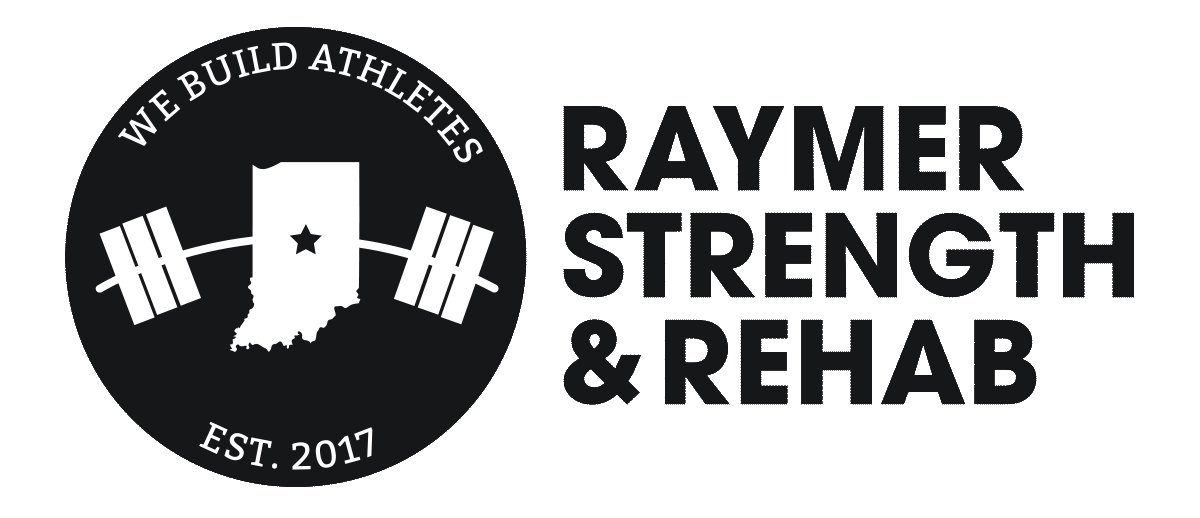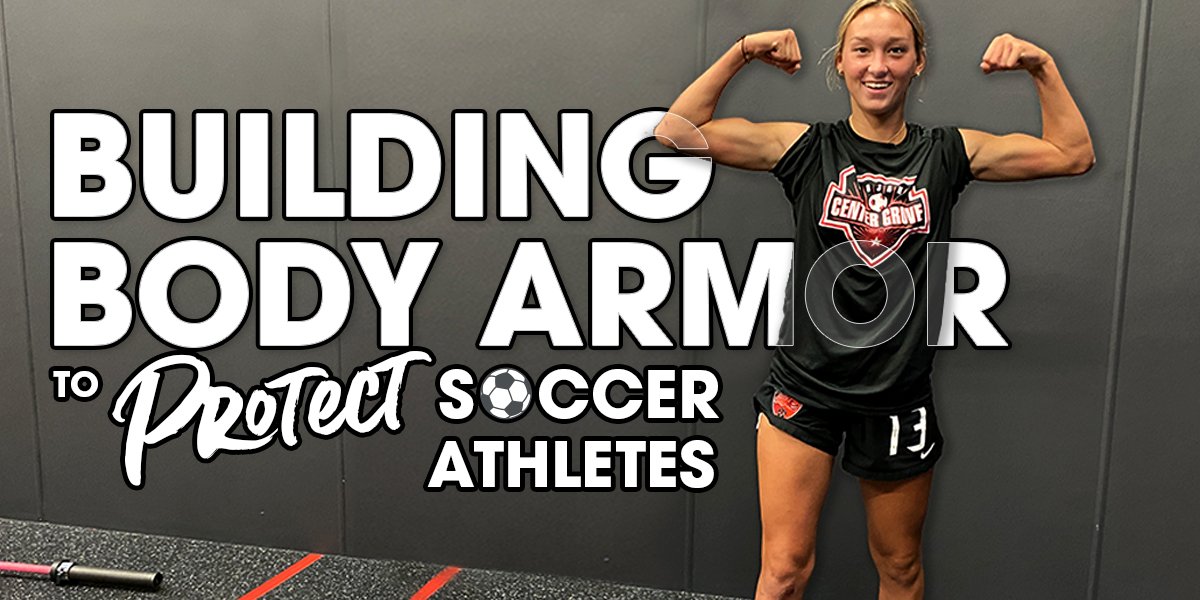Building Body Armor to Protect Soccer Athletes
Last week, one of my soccer athletes told me that their soccer coach made their opinion on resistance training very clear.
“Lifting will damage your growth plates,” the (unnamed) coach said. Thankfully, my athlete knows better.
We educate our athletes to help them understand why they are training and how to better understand the way their bodies work. This, in turn, empowers them to advocate for themselves in the future. But clearly, we still need to continue to educate the soccer community at large.
Strength training not only helps kids get faster and stronger, but the body armor that results better protects them for the demands of their sport.
Coaches that tell players not to strength train are harming them in the long run by depriving them of an essential method of protection.
|
|
Tweet this → |
So, how do we better protect and prepare our youth soccer athletes through sports performance training? Let’s break it down.
Photo courtesy of the Greenfield Reporter with modifications made to protect athlete privacy.
Reducing the chance of non-contact injuries
On the pitch, the ground could be wet or uneven. The opponent could make a surprising and unexpected move that puts an athlete in an awkward position to react. Or maybe, the athlete is coming down from a jump to defend the goal.
You can’t account for every variable, and injuries can happen despite the best training protocol. However, it’s possible to reduce the chances of it happening in the first place.
How ligament injuries occur
Usually, ligament injuries occur when the body is unable to absorb a force. Picture this– a soccer player plants their foot to decelerate and cut. The energy load travels up from the ground through the body. If the energy can’t be absorbed, it finds the weakest link and breaks it.
Training to absorb force
We must train the body to move efficiently and absorb force to reduce the chances of non-contact injuries.
There’s many ways to go about this. At Raymer Strength, we train force absorption through Olympic lifts, deceleration training, depth drops, single leg work, and more. We train the posterior chain (essentially the backside of the body) twice as much as the front side as that’s the part of your system that controls your brakes.
Learn more about how we approach force absorption →
ACL injuries occur more often in women, but research is mixed on whether it’s because of differences in biomechanics (joint and proportions), physiology (hormones cycles), environment (stress), or sociology (discouraged from lifting). It’s likely a mix of all of them. We must do our best to prepare, to educate, and to empower our female athletes to do what’s best for their bodies.
|
|
Tweet this → |
Training (and recovering) in order to move and react quickly
In addition to strengthening the body, reacting quickly to a play is often the make-or-break situation of ligament injuries. Athletes have to control their landings in a split second, often at awkward angles and with inferring opponents. We work on our athletes reactions via agility training, and we emphasize the importance of good nutrition and recovery so that their brain is in its healthiest state for the games’ cognitive load.
Soccer athletes should also consider the way their bodies bend and move, in general. As performance professionals, we should analyze our athletes’ movement patterns to find areas for functional improvement. At Raymer Strength, we perform a Functional Movement Screen on each athlete to identify imbalances and motor issues, we prescribe corrective movement exercises to improve them, and we monitor that improvement over time.
Reducing the impact of contact injuries
Soccer is physical– especially in women’s soccer. Impacts happen and limbs tangle as players scramble for the ball. By building more muscle, we can help our players stay on their feet more often than not, and we can better protect them from the fallout if they don’t.
Concussions are common in soccer, and female soccer players are twice as likely to suffer concussion as their male counterparts according to a study conducted with the Michigan High School Athletic Association last year (1).
Reducing the chance of concussions may be best approached through increasing strength in the neck (position and stability of the head) and increasing reaction times (to avoid collisions) through agility training.
|
|
Tweet this → |
Neck Strength Training
We train the muscles in the shoulders, upper back, and neck to reduce the likelihood of a concussion during impact. Conventional wisdom suggests that the better the head can be controlled (via the strength in the neck), the better the outcome.
However, research is inconclusive on the effectiveness of neck training when looking at reducing concussions (2). Until research proves definitely that it doesn’t help, sports performance professionals should keep it in our arsenal.
Improving Reaction Times
Quicker reaction times measurably reduced the likelihood of concussion injury according to a recent published medical study (2). The better an athlete can react to avoid the head collision, the less likely it it to happen. Duh.
We improve reaction times and reflexes via agility training. This feels like common sense, right? But avoidance via better reactions is usually not the first thing that comes to mind with agility training.
Agility is broken down into four components– the ability to accelerate, decelerate, change directions, and react to a stimulus.
Conclusion
Strength training is crucial for soccer athletes. It not only helps them get faster and stronger, but it better protects them from the chances of injury.
Soccer athletes are often overtrained in their sport skills and undertrained in their strength and athletic performance abilities.
Don’t let that happen to you.
Are you ready to build body armor with a qualified coaching staff?
References:
1. Bretzin, A. C., Covassin, T., Wiebe, D. J., & Stewart, W. (2021). Association of Sex With Adolescent Soccer Concussion Incidence and Characteristics. JAMA network open, 4(4), e218191. https://doi.org/10.1001/jamanetworkopen.2021.8191
2. Honda, J., Chang, S. H., & Kim, K. (2018). The effects of vision training, neck musculature strength, and reaction time on concussions in an athletic population. Journal of exercise rehabilitation, 14(5), 706–712. https://doi.org/10.12965/jer.1836416.208



